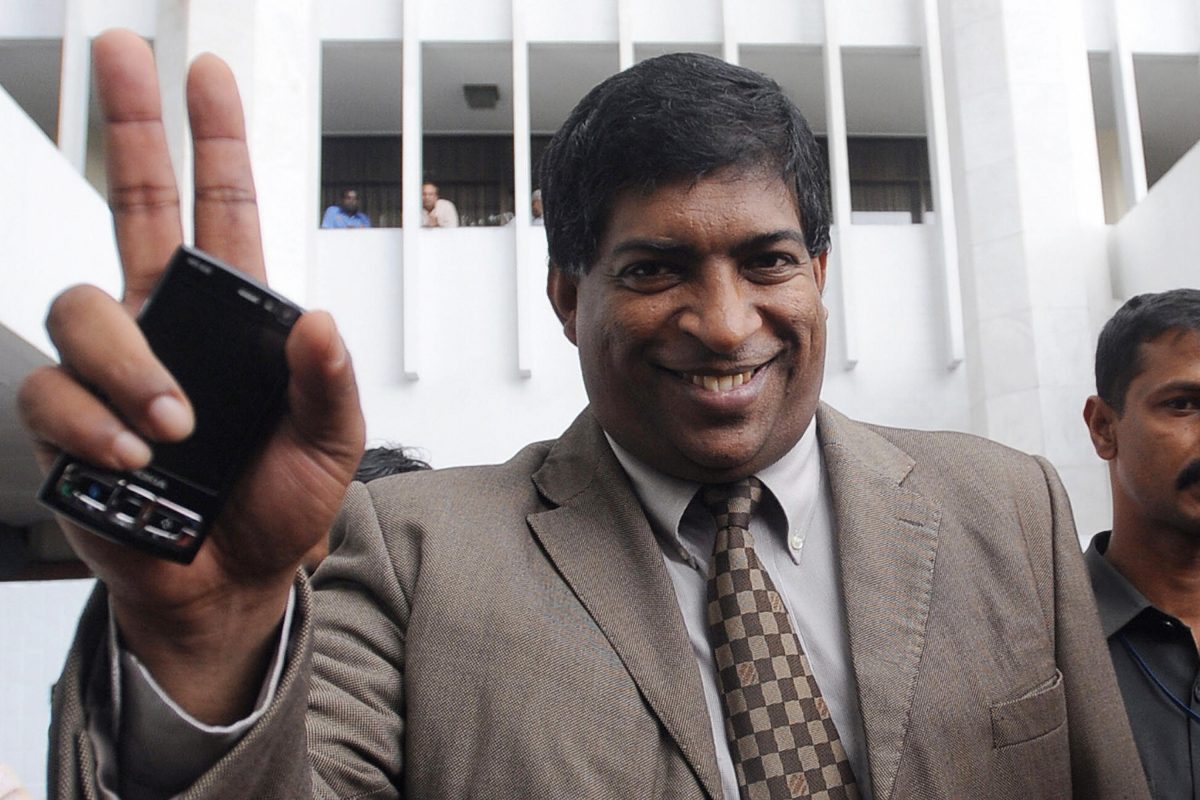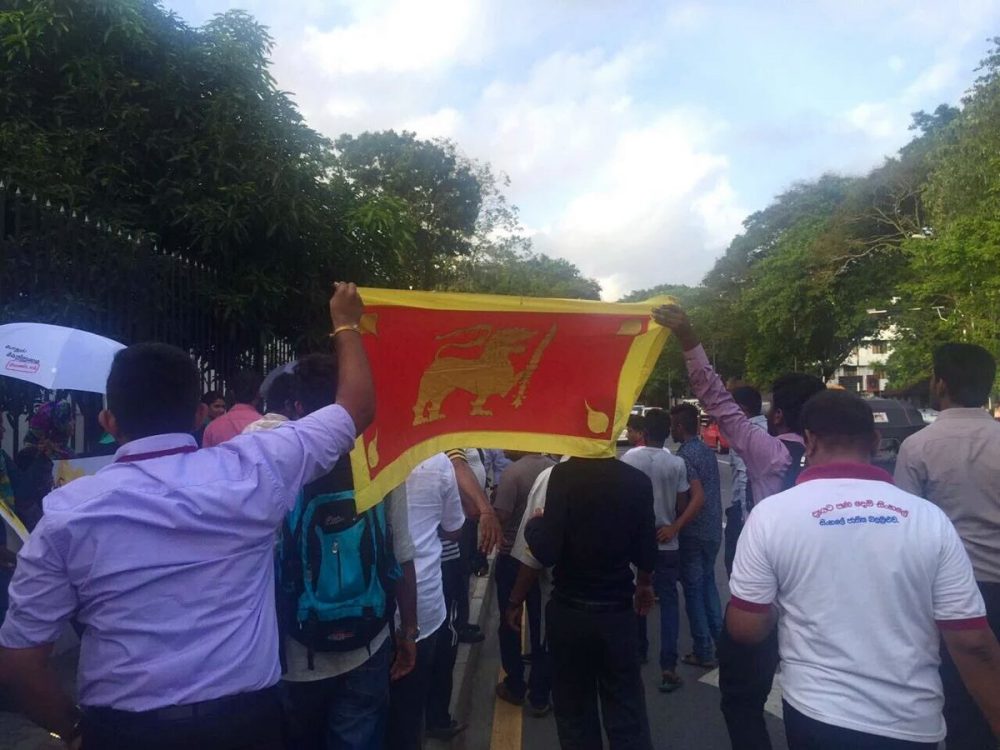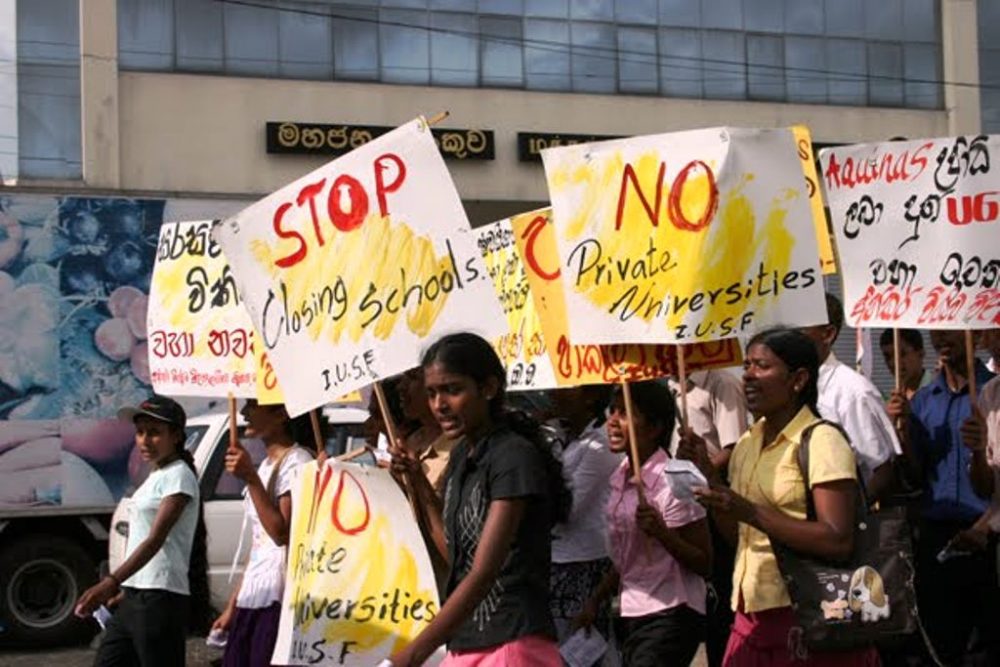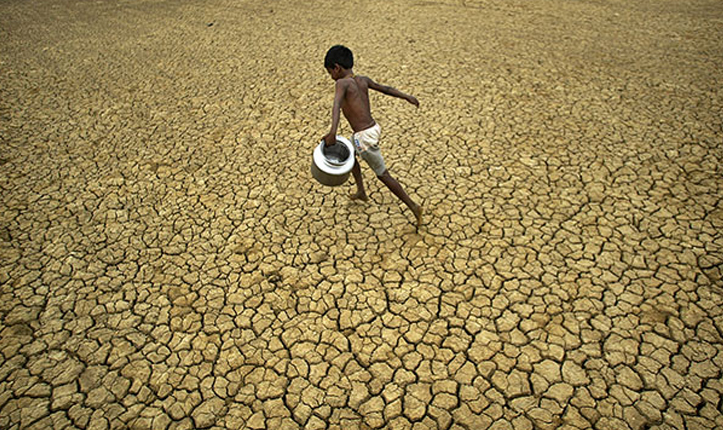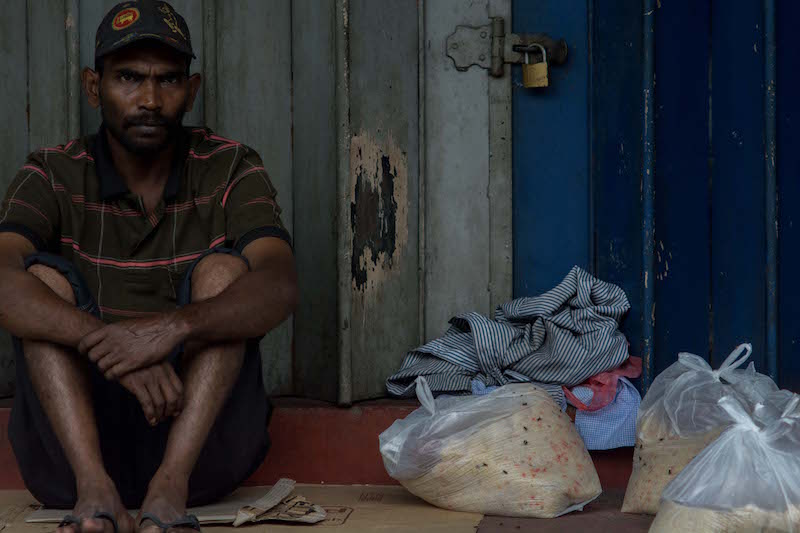
Year after year, Sri Lanka is victim to one natural disaster or the other, being particularly prone to floods and landslides, which have and continue to claim many lives. This has become a recurring issue which only grabs the limelight when the death count goes above two digits.
It seems a little too well scripted: the Government would routinely deploy military forces for humanitarian missions. The authorities at the Disaster Management Centre and the Department of Meteorology would have a field day trying to explain what went wrong, while the media and other private organisations would occasionally run campaigns to collect relief for those affected. Foreign aid would filter in, politicians would appear at the disaster scenes for a photo op and perhaps some dry ration distribution, and newspapers will have a stock of stories to publish for at least a fortnight.
Fast forward a week or two, life goes on, the media turns its attention elsewhere, the authorities claim the situation is under control, and the country moves on, leaving the root of the problem unresolved.
Unsurprisingly, history repeated itself this May. Once again, we were hit by a tragedy and taken unawares. The Government responded with its usual attempt at closing the stable door once the horse had fled, when, in fact, its institutions should have already been strengthened to handle a disaster of this scale, particularly because they have had years of experience facing such situations. We need not look beyond the landslide that took place in Koslanda in 2014 to come to the understanding that there are fundamental systemic weaknesses that should have been eradicated over a decade ago, ever since the devastating 2004 tsunami brought home certain realities.
For the sake of argument, let’s take a department that found itself dragged into the limelight kicking and screaming. The Department of Meteorology is a classic example of an institution people have long since lost faith in ‒ the old joke about the Department’s inability to make a simple weather forecast possibly stems from this lack of faith. Additionally, there is the issue of whether or not a warning was issued in the first place. The Government claims to have issued warnings, which supposedly went unheeded, when, in fact, even mainstream television which used to air weather forecasts, doesn’t allocate air time for it anymore because of the supposed unreliability of the Met Department data. The Government’s blame-game response, bang in the middle of the disaster, can only be called reactionary and counter-intuitive.
We warned the people of the floods but because they didn't expect it to be this bad, they didn't heed the warning – Anura Priyadarshana Yapa
— Roar.lk (@Roarlk) May 20, 2016
Evidently, the time has now come to do more than passively ignore departments like the Department of Meteorology and look into turning them into a force we can actually trust. Another alternative could be, particularly where the functions of the Department of Meteorology are concerned, to outsource the requirements to more reliable international organisations that have more funding and are better equipped. Either that, or we could continue doing exactly what we’ve been doing for years: helplessly watch the skies turn black while our country and countrymen drown as a result of ineptitude and inefficiency.
The lives lost to the flood and the landslides, in addition to the number of families that have been displaced, are a clarion call for action on behalf of the Government ‒ but also on behalf of us. We have the laws and regulations in place, it is now a matter of proper implementation and pushing the Government to fulfill their duties and obligations. It is high time we learn to turn our attention to areas where it is really needed ‒ a lesson learnt at the cost of over a 100 lives.
The Aranayake Issue
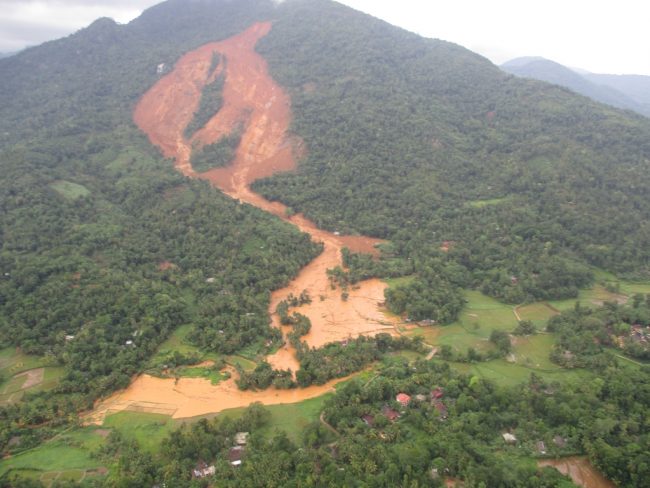
An aerial view of the destruction at Aranayake. Image courtesy Sri Lanka Air Force
On Friday, May 13, heavy rainfall caused by a tropical depression in the Bay of Bengal led to extensive flash-floods which, at its peak, affected over 420,000 people across 22 of the country’s 25 districts. As of now, 105 people have been confirmed killed and over 100 still remain missing, mostly as a result of two deadly landslides in Aranayake, in the hills of the Kegalle district.
What should be noted is that in 2002, Sri Lanka’s National Building Research Organisation (NBRO) declared Aranayake a “highly hazardous area,” not suitable for human habitation, made more dangerous by bad land-clearing practices. This alone is a clear example of how issues that require attention are often ignored ‒ most importantly, by the authorities themselves.
In a nutshell: two deadly landslides occurred in an area that was found hazardous over a decade ago.
Many media outlets, including Al Jazeera, call the Aranayake landslide the worst disaster to hit Sri Lanka since the 2004 tsunami. Colombo, Puttalam, and Gampaha were the most affected by floods, while Ratnapura and Kegalle have suffered the most from landslides.
Speaking to the Director of the NBRO Landslide Research and Risk Management Division, R. M. S. Bandara, it was understood that excessive clearing of forest, cultivation practices, and poor land use were major factors that contributed to the majority of the landslides, including the Aranayake landslides that buried three villages and left the country in shock.
NBRO Director Bandara has now advised that the entire region should be mapped and declared as a restricted zone, with no human activity being permitted.
“The entire slope region in the landslide prone area is not suitable for settlement and should be for agricultural purposes only,” he said, warning that proper land use patterns and a systematic surface drainage system should be introduced to prevent future problems of similar magnitude. He added that past landslides occurring over a long period of time have further weakened the already vulnerable zone.
While it’s too late to heed the warning, it should be noted that where any future construction activity or cultivation is concerned, caution is advised, especially considering the level of slope instability. Clearance from the NBRO is a prime requisite, and local government authorities should comply with the instructions issued through circular number 2011/1/NBRO by the Ministry of Disaster Management.
Meanwhile, the Irrigation Department, on several several occasions, noted that the recent floods were caused due to improper and illegal constructions.
Director General of the Department of Irrigation, Saman Weerasinghe, pointed out that during the past few decades, these illegal constructions could not be controlled due to the interference of several authorities (emphasis ours). He added that they must be removed in order to curb the river’s overflow.
The fact that illegal constructions could not be curbed due to the interference of several “authorities” isn’t lost on us.
Past (Bad) Records
Now that the devastation has taken place, those affected are attempting to piece together their lives. While victims attempt to scrounge what is left of their belongings in the flood and landslide hit areas, yet others are still in camps with no home to go to. In areas like Wellampitiya and Kolonnawa, we see the displaced cleaning their homes to return to what is left of their lives.
The Government announced earlier that compensation will be granted to all those who were affected by the disasters. Disaster Management Minister Anura Priyadarshana Yapa, in an interview with the Daily FT, has said that, at the moment, “compensation paid for death is about Rs. 100,000,” and for damages, ”we will pay between Rs. 100,000 to Rs. 2.5 million. People need not worry about compensation. All those who were affected will be covered by the insurance.”
According to him, the funds for the victims are already available and will be readily paid, once the National Trust Fund officials have prepared an appropriate method of doing so. In other words, once the Trust Fund evaluates the damage that was caused, and after figuring out all the other particulars, only then will the displaced get their compensation. In short, the Government has approved for Rs.300 million to be kept away from the hands of the needy until they figure out contingencies they should have ages ago.
Precisely how the Government plans to go through with this is still unclear. We can only hope that this time around, the Government overturns its terrible track record where compensation is concerned, and actually fulfills its promises. We haven’t forgotten the victims of the Meeriyabedda Landslide, although the Government seems to have.
City Beautification And Evident Holes
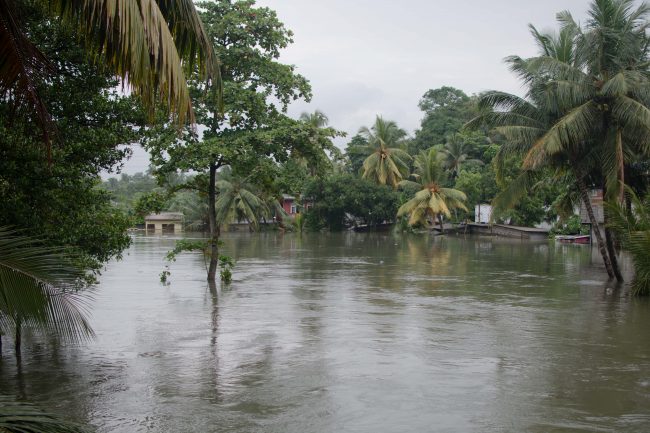
Wellampitiya under water. City beautification efforts are among the factors identified as responsible for the flooding. Image credit: Thiva Arunagirinathan
Flooding is now a common occurrence in and around Colombo and its suburbs. City beautification has unfortunately left out important factors such as good surface drainage, particularly worrying in a city where wading through impromptu streams can be part and parcel of a daily commute. The wetlands have been redesigned with gardens, walking paths, and reservoirs that now leave Colombo suburbs without their natural water retention abilities.
According to Asoka Abeygunawardana, Chairman of the Strategic Enterprise Management Agency (SEMA), programmes implemented to give the city a facelift have contributed considerably to the intensive flooding in the Colombo and Greater Colombo areas.
He recently told the Ceylon Today that sufficient precautions had been not carried out when planning various development programmes. “We have a Ministry of Disaster Management but the organisations and centres under this particular Ministry cannot deal with all the problems which have been created by the adverse weather conditions. If there was proper coordination between different Ministries, the death toll and the property damage could have been reduced.”
In the same article, he also claimed that various illegal land reclamation projects, which were carried out in the name of development programmes, and the lack of “scientific development plans” also made the flood situation worse. He alleged that the government had not included a flood preemption or mitigation component in the highway construction plans.
“Engineers are finding serious issues with this whole system of constructing highways, as they are constructed in environmentally disaster-prone areas which once acted as drainage basins. The negative impact upon these conducive environmental systems was not considered when conducting feasibility studies to construct these highways. Therefore any highways laid out in the future should ideally be elevated highways” he said.
This is yet another example of Ministries dropping the ball when it comes to taking responsibility – the results of bad planning and corruption truly rear their ugly faces in times of disaster. The price, this time, was paid not in wasted time and stagnation, but in lives.
Mismanagement Of Waterways
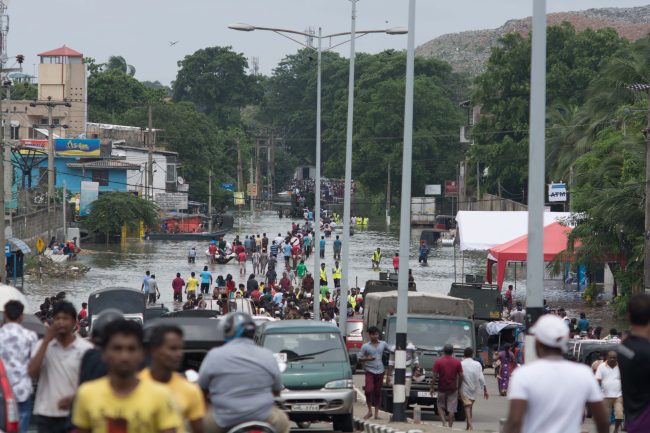
The recent floods have taught us that we can’t afford to ignore the state of our waterways. Image credit: Thiva Arunagirinathan
Our major waterways, including the canals, have also seen neglect. Those living along the low-lying Kelani river basin, including those in Gampaha district, were inundated – and while there are proposals in the storm drain pipe, made after the disaster, it should be noted – actual remedial measures do not seem forthcoming, what with the government offering “compensation” instead. Much could have been prevented and can still be prevented if factors as fundamental as surface drainage are taken into consideration.
The Irrigation Department has proposed a new system to prevent the overflowing of the Kelani river – and if it does overflow, the water will be made to flow through without any resulting harm to residents in surrounding areas.
Director General of the Irrigation Department, Saman Weerasinghe, said the proposed system had been formulated having identified existing shortcomings. He noted said that back in 1989, the water had receded within three days despite water levels reaching nine feet, but that during the most recent flood situation it had taken over a week for the water to recede. He also added that, as part of this new framework, all unauthorised constructions both around and within the Kelani River and its environs will be systematically removed. The residents of the area will be gradually moved under a three-phase framework, and not immediately.
Additionally, according to the Director of the Irrigation Management Division, Chandrika Ethugala, a 33-feet wide reservation on either side of the Kelani River, or any major river, should be maintained to minimise the flood threat. Officials say that reservations of the Kelani River banks from Modara to Pugoda should be cleared and maintained properly to minimise flood hazard.
However, calling people’s homes “illegal structures” is easy if your armchair is comfortable enough. The question is: does the Government have an alternative housing plan for all those who will soon lose their homes? This begs another question: what took the authorities so long to realise that these constructions are “illegal”? Did we need a disaster of this scale to get the authorities jogging?
The NBRO also added that they have received information concerning 660 possible locations throughout the country which are currently at risk of landslides and earth slips.
NBRO Director of Disaster Management, R.M.S. Bandara, noted that all of those locations cannot be confirmed as guaranteed to face the twin threat of landslides and earth slips. However, he said the NBRO will be maintaining a 24/7 watch over the concerned areas henceforth.
No More Blame Game
The next few months will answer a few crucial questions, including: will the current Government follow in the footsteps of its predecessor and forget the promises made to the victims? Will Aranayake follow the Meeriyabedda example?
As with every other government before this, the authorities ask the people to be “vigilant” when facing “natural” disasters. The Government, however, has not provided any new information or methods to prevent excessive damage from such disasters in the future. Interestingly, this particular disaster also saw the widespread mobilisation of the ordinary citizen, which came together in a more efficient manner than the authorities themselves. The extent to which these individuals used technology to marshal relief salvaged the situation more than anything the Government seemed to do. That ordinary citizens used basic technology like SMS and internet better than any Governmental organisation is telling ‒ at the end of the day, they bailed the Government out of murky water, not the other way around.
While it is true that no one purposefully created natural disasters with the intention of destroying lives and property, and that playing the “blame game” is neither here nor there, it is equally important that at least now, this late in the day, the right questions are asked, and authorities which should have functioned better are brought to task. The Government cannot control or command a cyclone, but they can mobilise themselves to take responsibility and deal with the aftermath.
Thus, instead of “visiting the displaced” to gain more popularity, authorities should do more and talk less. For instance, if the Government could appoint a proper committee consisting of qualified professionals to identify disaster zones and create a feasible relocation programme to remove those living in the ‘danger zones,’ in addition to developing a flood prevention plan, such disasters could be avoided in the future.
The fact of the matter is that year after year, the government authorities conduct surveys, report back, and recommend steps which should be taken in case of the next big natural disaster. Yet, those steps are not heeded until even after the eleventh hour ‒ fingers are pointed and wagged this way and that, and the clock for yet another disaster is reset.
The biggest, most important lesson learnt in the worst possible way is that we, as a nation, are terrible at learning from our past experiences. We seem to live hand to mouth, flash flood to flash flood, and passively allow authorities to be just as complacent as we are. We don’t need another Aranayake ‒ in times like this, with an increased threat of natural disasters, we need a more efficient Government that will pull up its sleeves and get to work.
Featured image credit: Thiva Arunagirinathan

